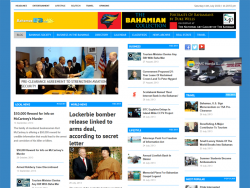Practically every day there is a story that someone has been モmanipulating the financial system of The Bahamas to further a wide range of illicit activities.
Such activities range from failing to report taxable earnings, absconding with public funds as was reported over the past 48 hours.
The China Daily reported Chinaᄡs Ministry of Commerce as saying that over the past two decades 4,000 Chinese モcorrupt officials and some private firmsメ had used companies registered in offshore finance centres, such as the British Virgin Islands and The Bahamas, to transfer capital illegally.メ The amount is estimated to be as much as $50 billion.
Then there those US citizens who used credit and debit cards issued by Leadenhall Bank and Trust, the oldest Bahamian private bank, to evade paying taxes. Or the recently reported case of the Brazilian official accused of allegedly transferring $500,000 to a company in The Bahamas.
The existence of these cases is no indication that the system is failing or is not working. As William Jennings Leadenhallᄡs managing director observed in an interview earlier with the Business Journal, モOne or two will fall through the cracks but the system itself is working.メ
Money laundering is defined by the US Treasuryᄡs Financial Crimes Enforcement Network (FinCen) as モthe movement of illicit funds for the purpose of concealing the true source, ownership or use of the funds.メ
According to FinCen, the purpose of money laundering is to モtransform the monetary proceeds derived from criminal activity into funds with an apparently legal source.メ
The FinCen identifies three phases in the money laundering process. They are placement, which is the physical movement of funds into financial institutions or the retail economy. Layering the second phase is primarily concerned with the techniques used to conceal the funds once they have entered the financial system. The final phase, integration, marks the successful completion of the process when the illicit money re-enters the economy as legitimate funds.
Placement:
Common methods of placement include currency smuggling across international borders for deposit.
Prior to the requirement to report deposits of $10,000 or more it was possible for cash deposits of large sums to be made. The $10,000 reporting requirement has resulted in what the FinCen terms モstructured amountsメ, in which amounts are deposited below the $10,000 reporting in particular patterns.
Layering
Layering is where the process becomes interesting. Multiple and often complex financial transactions are employed to モfurther conceal the illegal natureメ of the funds and モto make it difficult to identify the source of the funds or eliminate an audit trail.メ
According to FinCen layering is accomplished primarily through the purchase of モmonetary instrumentsメ (travelerᄡs checks, banks drafts, money orders, letters of credit, securities, bonds, etc.) モwith other monetary instrumentsメ, by transferring funds between accounts, and by using wire transfers.
Integration:
Once properly laundered, the funds are now ready to re-enter the economy and do so as securities, businesses and real estate. Unnecessary loans may also be obtained to disguise illicit funds as the proceeds of business loans.
The new Know Your Customer (KYC) rules make it more difficult for persons to create offshore anonymous companies. The Fincen reported that such companies have been used for used for lending laundered money back to criminals who then deposit the amounts in legitimate bank accounts.
What the FinCen calls shell companies created for the sole purpose of obscuring the funds can also be used to purchase real estate, which is then sold with the proceeds going to the criminal.
C. E. Huggins, The Bahama Journal



